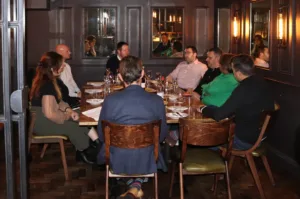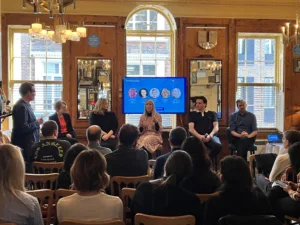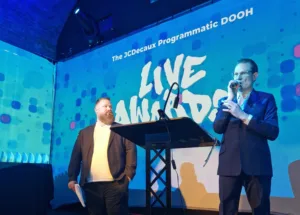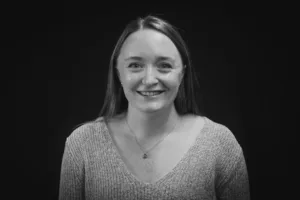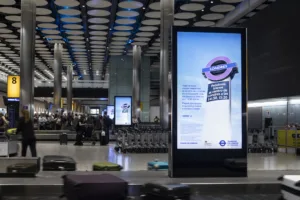Can programmatic Digital Out of Home (pDOOH) genuinely claim to be a ‘full-funnel’ advertising solution? Is it a mistake for the outdoor industry to try to position pDOOH as such?
NDA (in association with JCDecaux) recently invited industry experts from across the country to answer these questions and more on the current state of pDOOH advertising, with two roundtable discussions happening simultaneously in Manchester and London.
Leaders from agencies VCCP Media, Dentsu, Mindshare, Zenith Media, Publicis, Wavemaker UK, and Matterkind gathered in London, while attendees at the Northern event included senior execs from PHD, Crimtan, iProspect, Dentsu, Rommatic, Republic of Media, and Skyrise.
Kate Tovey, Director of Customer Engagement at JCDecaux set the scene for the London conversation. “Most people still assume that OOH is relevant only to generating ‘top-of-funnel’ awareness, but I genuinely believe that there are briefs where pDOOH can play a valuable role throughout the funnel. We recently carried out some research that indicates how the role of outdoor advertising is changing right now.
“For example, we’re seeing a big trend around the increasing use of first-party data to help shape pDOOH campaigns and, surprisingly, our research revealed that the majority of individuals with responsibility for planning and buying DOOH inventory in 2023 are also responsible for at least one other online channel. Brands are actively exploring the potential of pDOOH as part of an omnichannel campaign, rather than ‘outdooor’ being siloed off or treated as an optional afterthought.”
Let’s go outside?
Joe Brewer, Client Partner, Mindshare, commented: “The ability to quickly switch messaging has become crucial to so many advertisers and the growth of pDOOH has gone hand-in-hand with that, offering a brilliant solution. That said, there’s a right and a wrong time to use pDOOH, and there are still many clients out there with a love of paper and paste. We need to be careful as an industry that the acceleration of pDOOH doesn’t actually lead to a narrowing of choice for advertisers, who might sometimes prefer to buy premium static sites.”
Richard Simkins, Global Head of Strategy & Operations, OOH, Dentsu, argued that rather than try to mimic the ‘measurability’ of other digital channels, pDOOH should play to its unique strengths. He said: “With mobile advertising, for example, the time between impression and consumer action is often quite short. With OOH, that time window is usually longer. My worry around linking pDOOH with bottom-of-funnel performance campaigns is that it’s not necessarily clear what’s happening in that window between impression and action. Let’s not downplay the strengths of OOH, namely its scale and ability to trigger an emotional response. I think those messages appeal more to brands.”
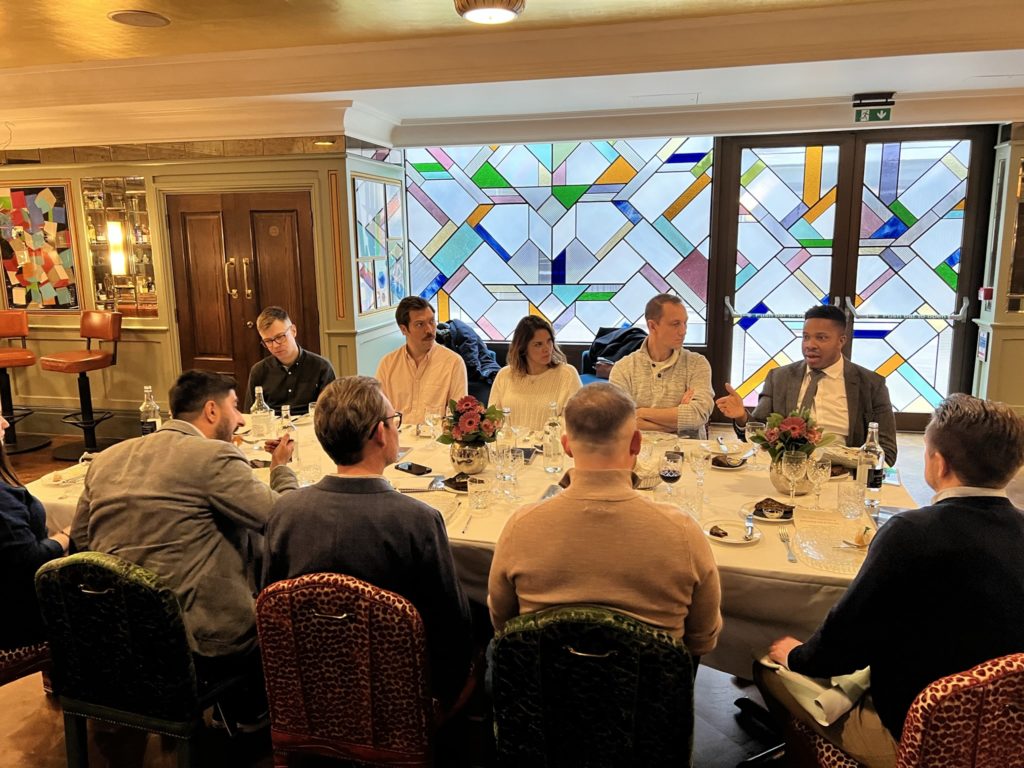
However, Simon Jenkins, Chief Strategy Officer, VCCP Media, argued that there are definitely use cases for pDOOH in combination with live data that could be hugely valuable to some businesses. “Think about how capacity data could be used to inform dynamic creative with pDOOH. That might be data relating to stock volumes in a nearby store, empty seats on train or in a theatre, available tables at a restaurant. The industry could use a few more case studies like that.”
Clarity of vision
Jon Kershaw, Managing Director, PHD agreed that the issue of measurement remains the biggest issue for clients and placed the responsibility for clarifying the situation at the door of agencies. He said: “The attraction of digital channels over traditional channels has always been about measurability, so it’s natural that clients should expect to be able to measure pDOOH in a similar way. It’s incumbent on us as advisors to our clients to say, this is the role of digital outdoor in the mix and, therefore, this is the KPI we’ll measure it against. That’s a better approach than saying, ‘here are a dozen KPIs – let’s just measure everything.’”
Ian Williams, Strategy Partner at iProspect, added: “Any channel that gives you the ability to respond in real-time is fundamentally valid in today’s world. I come from a performance background originally and I can see how there is a tendency at times in DOOH to get obsessed with how great the technology is and downplay the role of creativity paired with contextual relevance. If we can bring the technical capabilities of the format together with live data and local knowledge of each site, pDOOH can be an incredibly powerful format, especially at a time when TV and video consumption is fragmenting and scale is becoming harder to achieve.”
The flexibility of pDOOH will continue to attract new advertisers to the format through 2023, argued Amanda Robertson, Programmatic Manager at Rommatic. She said: “From what we’ve seen, the ability to quickly activate campaigns, to alter creative at short notice, to optimise particular outdoor sites at particular times, it’s all become a much easier process for clients to understand. Likewise, brands no longer require massive budgets to make an impact with outdoor advertising. They can tailor their campaigns and feed-in data to make them much more efficient. Combined with the omnichannel opportunities and the potential of mobile to help close the loop, it’s an exciting time to be working in pDOOH.”



